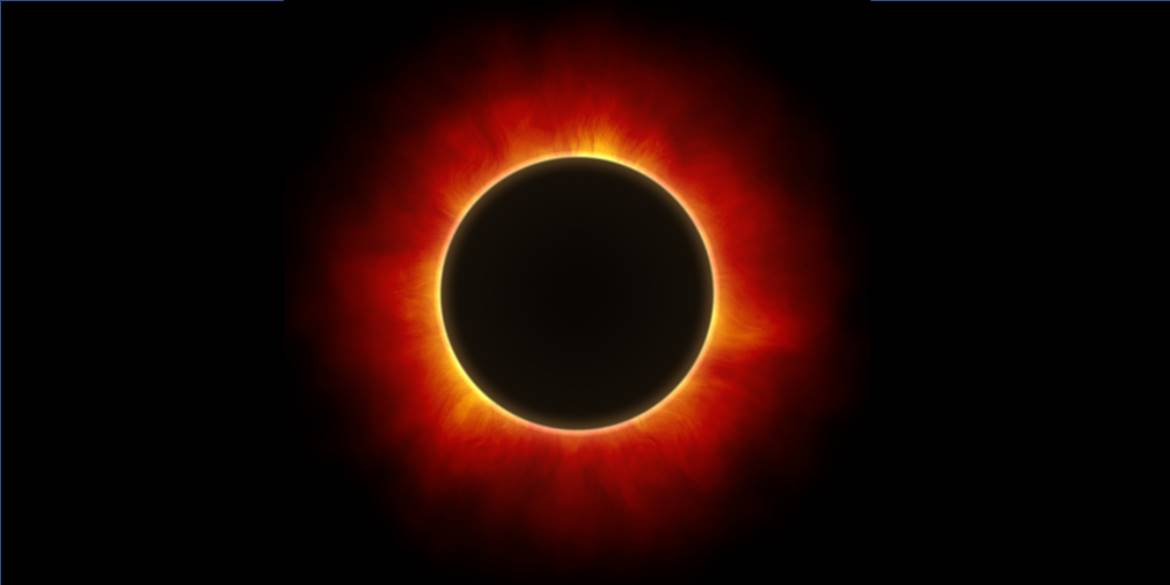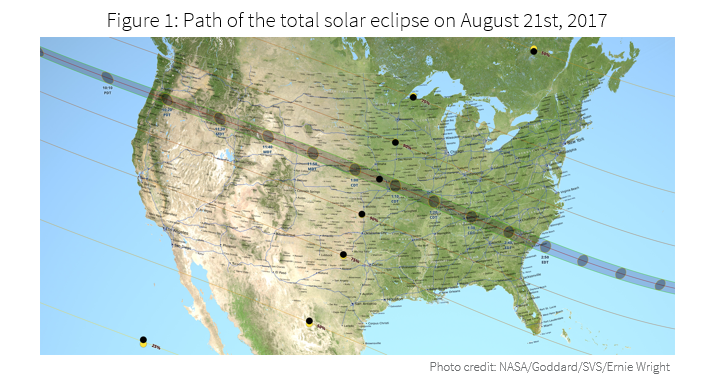On August 21, 2017, the U.S. will experience a solar eclipse for the first time since May 2012. The eclipse will cause an obscuration of the sun’s light, resulting in a reduction of the energy from irradiance that will hit the Earth’s surface. As the eclipse crosses the U.S., it will have total obscuration of the sun along a specific path. As a result, the solar eclipse will impact solar power output on the U.S. electric grid just as it did in Europe in 2015.
The impact of the eclipse will be based on the location of any given solar generator, as the path of the eclipse is charted to start in Oregon, and pass southeast to South Carolina. Even if the path of the eclipse doesn’t pass directly over a solar generator, partial blocking—or obscuration—of the sun will occur throughout the Continental U.S.
This obscuration will need to be properly accounted for when forecasting the output of any solar generator. We’ll detail here how Clean Power Research plans to account for the solar obscuration in our SolarAnywhere® forecast for August 21, 2017.
Predicting how the solar eclipse will impact solar power output
The impact of the solar eclipse on solar generator output will be based on how much the obscuration blocks solar radiation from reaching the generator location. Whether the path of the total obscuration passes directly over a solar generator or not, no solar generator in the Continental U.S. is exempt from experiencing some blockage.
To prepare for the eclipse’s impact, we first calculate an obscuration factor (“OF”) based on the solar generator’s location. Then the OF is applied to the clear sky output of the generator. To do this, we modify the clear sky irradiance curve to reflect the new predicted shape when considering the eclipse. We can then use the eclipse-modified clear sky to determine AC power output in the PV simulation model. This is diagrammed further in Figure 2.
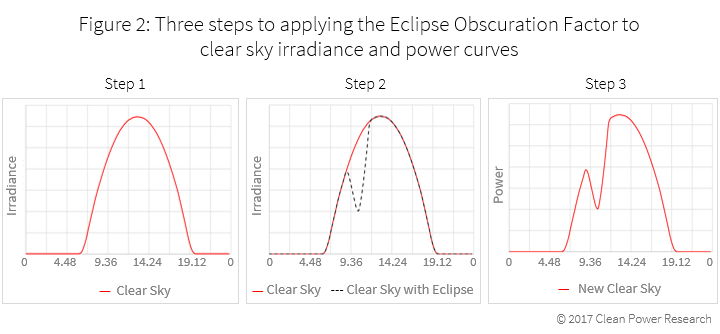
With the “New Clear Sky” curve from Figure 2, Step 3, we now have the maximum available power output for each solar generator on the day of the eclipse, August 21. This curve will then serve as the baseline on which we apply our forecast.
As August 21 approaches, our cloud model forecasts will input the New Clear Sky curve for the 21st instead of the original clear sky shape seen in red in Figure 2, Step 1. If clouds and reduced irradiance forecasts are predicted, then those reductions will be further applied to the lower available clear sky irradiance that will occur during the eclipse period.
Central versus distributed PV
The impact of the eclipse is based on the location of any given solar generator, so in determining the overall impact we must consider both single (e.g., utility-scale) and multiple distributed (e.g., behind-the-meter) solar sites.
While predicting the impact of a single solar generator, either transmission or distributed, can be explicitly modeled, the impact of the eclipse on a fleet of solar generators can become more complicated. Large numbers of distributed solar systems can be installed in a relatively wide geographic area, so an approach that accounts for all the geographic dispersion needs to be used.
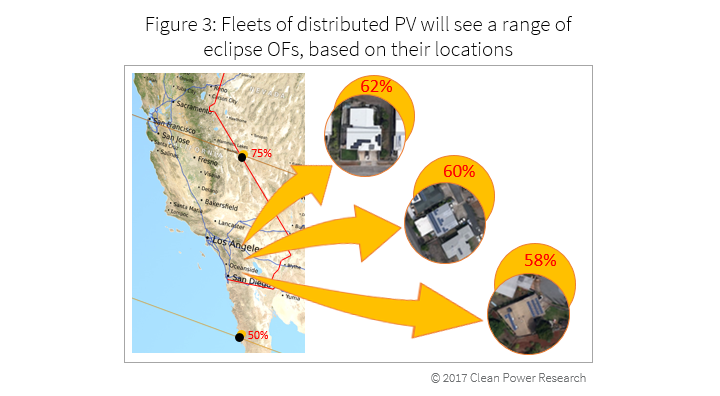
For our customers forecasting fleets of distributed PV, we will apply our eclipse-modified clear sky model to the aggregated output of subsections of the fleet. This will allow the forecast to properly account for the eclipse impact on a geographic basis, but without needing to individually modify the clear sky curves of each of the hundreds-of-thousands of individual systems we’re forecasting.
How an eclipse forecast can be used
Our SolarAnywhere forecast will produce an altered clear sky curve for forecasts on August 21st that our customers can use within their existing scheduling and forecast processes. In effect, the eclipse period will behave very much like a steep ramp in PV output—one that could be created by transient clouds. In this case, however, the independent power producer and utility will be more assured that this eclipse-induced ramp will be happening and can plan, thus saving on short-term costs.
There is also the possibility that cloudy conditions will be present on August 21 such that the magnitude of ramp due to the eclipse itself will be masked, as shown in Figure 4. Either way, the solar industry will be prepared by using SolarAnywhere to both accurately forecast and account for the impact the eclipse will have on the amount of power generation from solar.
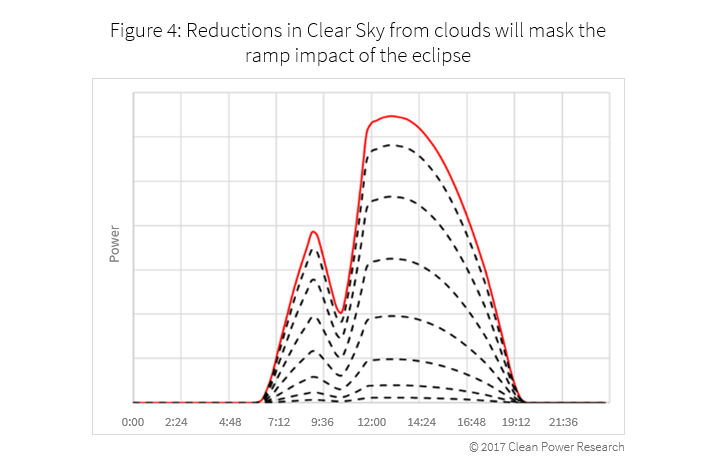
If you’re a utility or independent power producer and have a solar generator that you think will be impacted by the eclipse, contact us and we’ll send forecast clear sky curves to help you better predict the behavior during the eclipse.
For the first time in the U.S., there will be a significant impact from a solar eclipse on the operation of the electric grid due to the relative capacity of installed PV. While you safely watch the eclipse in August, keep in mind that this event is impacting our electric power system!
